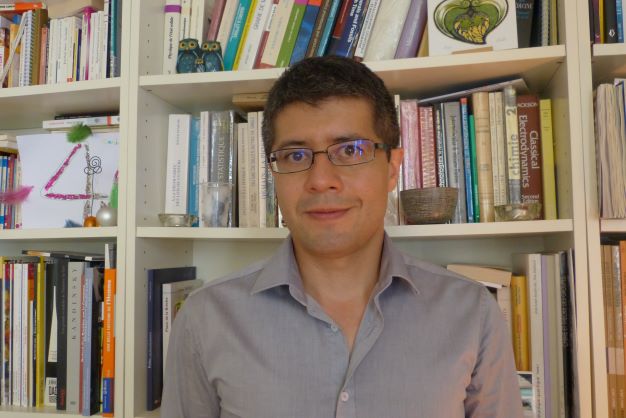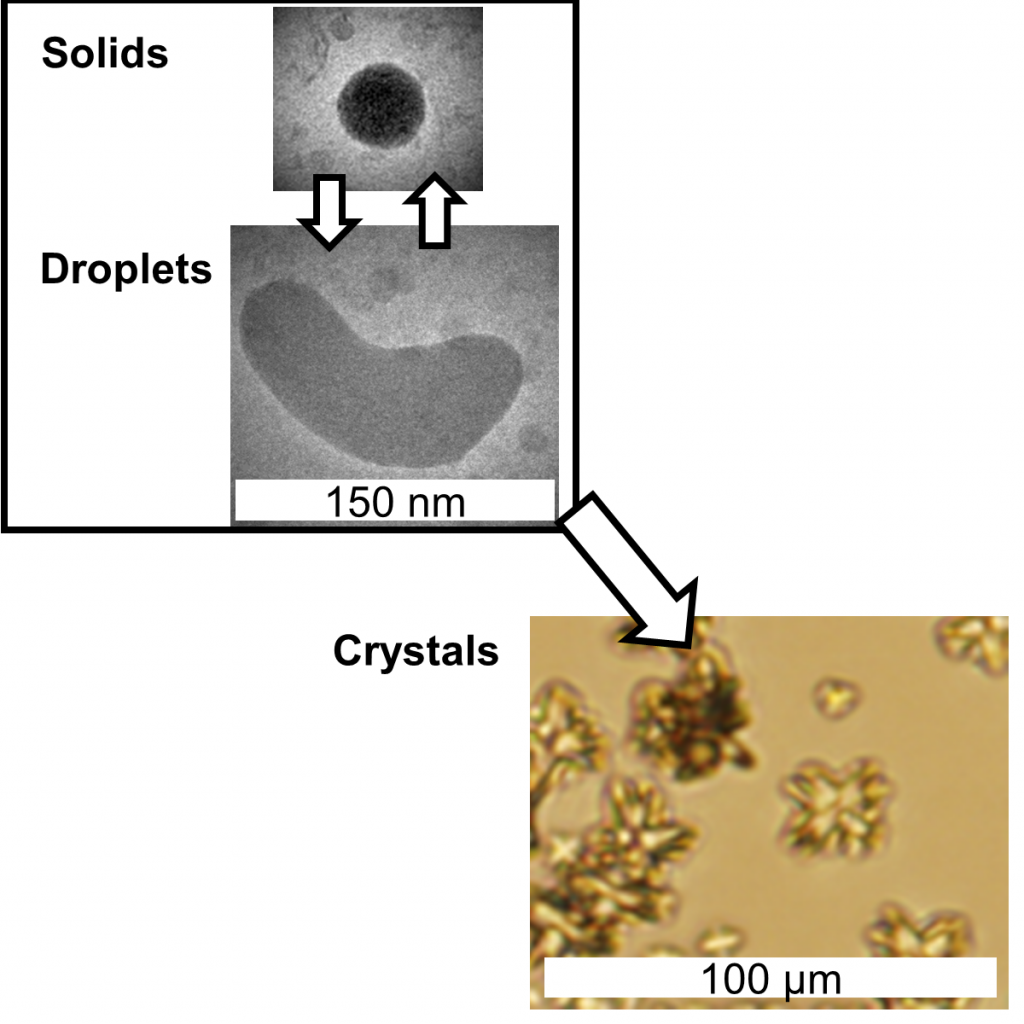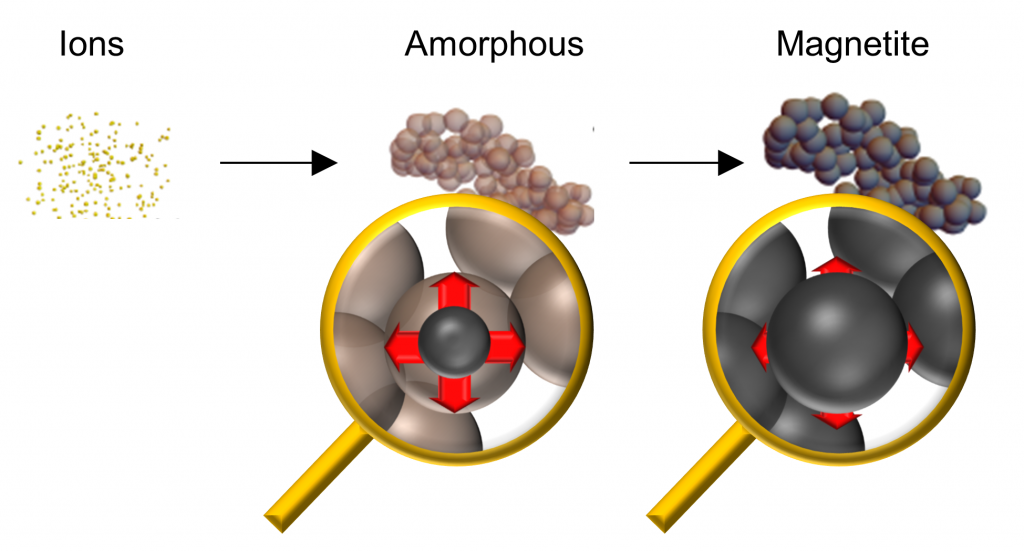
Research topics
- Mechanisms of crystallization in solution : confrontation between theories of nucleation / growth and in situ characterizations at the nanometer scale
- Glass transition : realization of experiments discriminating the kinetic or thermodynamic nature of the glass transition
- CO2 capture and release in solution: elucidation of nanoscale mechanisms for energy-efficient processes
Selected papers

Coexistence of Transient Liquid Droplets and Amorphous Solid Particles in Nonclassical Crystallization of Cerium Oxalate
Durelle M, Charton S, Gobeaux F, Chevallard C, Belloni L, Testard F, Trepout S, and Carriere D, The Journal of Physical Chemistry Letters (2022)
We found that solution crystallization of cerium oxalate involves two non-crystalline transients, namely solid amorphous nanoparticles, and reagent-rich liquid nanodrops.
Self-Confined Nucleation of Iron Oxide Nanoparticles in a
Nanostructured Amorphous Precursor
Baumgartner J, Ramamoorthy R K, Freitas P A, Neouze M-A, Bennet M, Faivre D, and Carriere D
Nano Letters (2020)
We have resolved at the nanoscale the formation of magnetite nanoparticles in solution, and compared to the classical nucleation / growth theories. We show that the transient amorphous, nanostructured network that forms in less than 6ms confines the crystallization reaction. These characterizations improve our understanding and mastery of the “non classical” crystallization mechanisms involved in biomineralization and numerous industrial processes.


Amorphous to Crystal Conversion as a Mechanism Governing the Structure of Luminescent YVO4:Eu Nanoparticles
Fleury B, Neouze M.-A., Guigner J.-M., Menguy N, Spalla O, Gacoin T, Carriere D
ACS Nano, (2014)
We have shown that crystalline YVO4:Eu nanoparticles synthesized in aqueous solution follow a non-classical nucleation mechanism. This originates from the formation of a transient nanostructured amorphous netwok, which templates the final structure of the crystalline nanoparticles.
CV
Since 2021
CEA Research Director
2019
HDR – Habilitation à Diriger des Recherches, Université Paris-Saclay : “Émergence de l’ordre et du désordre à l’échelle nanométrique”
2004 –
CEA scientist
2003 – 2004
Max-Planck Institut, Interfaces department (Potsdam)
Study of the hydration in polyelectrolyte multilayers
1999 – 2002
PhD – Doctorat en Sciences des Matériaux
“Synthesis and functionalisation of ZrO2 nanoparticles for fuel cell applications”.
Ecole Polytechnique, Laboratoire de Physique de la Matière Condensée
1998 – 1999
Master in Materials Science, Paris VI University
1995 – 1998
École polytechnique “Grande Ecole” engineer, graduation in organic chemistry and condensed matter physics.




